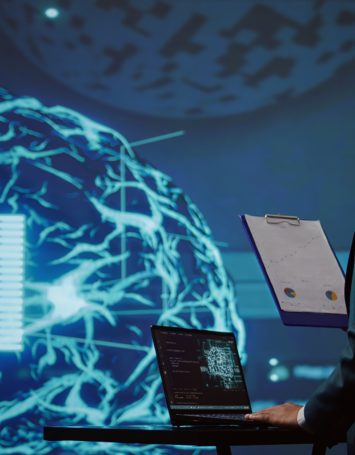By: Oz Halabi and Sasha Samra
Federal Research & Development Tax Credit
The fundamental engine of long-term economic growth is technological innovation. Research and development (“R&D”) allows entities to explore viable options for generating new or improved technologies. It is a cornerstone of long-term economic growth. It drives technological advancement and innovation, enabling businesses to boost productivity, reduce costs, and remain competitive globally. R&D investments also foster human capital development, diversify economies, and improve standards of living. They enhance a nation’s global competitiveness, ensure economic resilience, and contribute to sustainability by developing environmentally friendly solutions. Moreover, R&D activities lead to knowledge spillovers that benefit various industries, creating a positive multiplier effect on economic growth. In essence, R&D not only fuels economic prosperity but also addresses complex challenges and elevates the overall quality of life for societies.
The federal government in the United States encourages R&D in several ways. Before 2022, entities were allowed to deduct from their taxable income all their “qualified research and development” (“QRE”) expenses such as wages, supplies, and contract research expenses directly related to qualified research activities, to the extent paid or incurred by such entities during the taxable year, in carrying on such entities’ trade or business. This was known as expensing and was allowed for QREs from domestic and foreign research under Section 174(a) of the Internal Revenue Code of 1986, as amended (the “Code”). As of 2022, this option is no longer available to QREs.
Under current law, there are two options for recovering the cost of QREs. Code Section 174(b) allows entities to capitalize QREs and amortize them over 5 years (with a 1/10th first-year deduction under a half-year convention) for domestic expenditures, and 15 years (with a 1/30th first-year deduction under a half-year convention) for expenditures attributed for foreign research. The second option refers to Code Section 59(e) which allows companies to amortize QREs over 10 years, starting with the year the expenditures were paid or incurred.
Code Section 41 Research Tax Credit
Code Section 41 provides incentives to businesses conducting qualified research activities. This tax credit encourages innovation and technological advancement. To qualify for the benefits provided by Section 41, businesses must engage in activities aimed at developing or improving products, processes, or software. The tax credit is based on a percentage of eligible R&D expenses and can be used to offset U.S. federal income tax liability. The goal of Section 41 is to promote research and innovation by reducing the tax burden on companies investing in R&D, ultimately fostering economic growth and competitiveness. The incentives granted under Section 41 have four components: (1) a regular research credit; (2) an alternative simplified credit; (3) a basic university research credit; and (4) a credit for collaborative energy research.
In any tax year, an entity may claim no more than the basic university research credit and the credit for collaborative energy research, as well as either the regular research credit or the alternative simplified credit. (Henceforth, the regular research credit and the alternative simplified credit are referred to jointly as the research and experimentation tax credit.).
a. Regular Credit
The regular research credit is equivalent to 20% of an entity’s base amount for the current fiscal year. Generally, the “base amount” is calculated by multiplying the entity’s “fixed base percentage” by its average yearly gross earnings over the previous four years. For entities established after 1988, the fixed base percentage is calculated according to a formula that covers an entity’s first 10 years with QREs and gross receipts and is set at 3% for the first 5 of those years. The base amount cannot be less than 50% of a company’s current-year QREs.
Whether an entity benefits from the regular research credit depends on its fixed-base percentage. All other variables being equal, the entity has a higher likelihood of obtaining regular credit as this proportion declines. If an entity’s ratio of current-year QREs to its average annual gross revenues over the preceding four tax years is higher than its fixed-base percentage, it is also likely that the regular research credit will be advantageous to it.
b. Alternative Simplified Credit
The alternative simplified credit equals 14% of an entity’s QREs above a base amount, which is 50% of the entity’s average QREs in the three previous tax years[1]. The credit rate is 6% of current-year QREs for companies with no QREs in any of the three preceding tax years. The decision to use the alternative simplified credit remains in effect unless an entity secures the IRS’s consent to switch to the regular research credit. Owing to differences in the base amounts of the regular research credit and the alternative simplified credit, an entity is unlikely to benefit equally from both. An entity may benefit more from the alternative simplified credit under the following circumstances: (i) an entity’s regular research credit base amount is larger than its alternative simplified credit base amount; (ii) records for determining the entity’s base period as a start-up firm are incomplete; (iii) an entity’s gross receipts have increased faster than its QREs in recent years; or (iv) an entity has been involved in a series of business mergers, reorganizations, acquisitions, or dispositions.
State R&D Credit
Currently, 35 states in the U.S. provide R&D tax credits to business owners to boost economic growth, create jobs locally, and increase profitability. When it comes to QREs and other claim classifications, many local innovations tax credit schemes follow federal and IRS guidance; however, some states have legislated exclusions.
New York Research and Development Tax Credit
The State of New York provides two separate R&D tax credits: (1) the Excelsior Research and Development Tax Credit and (2) the Life Sciences R&D Credit. Taxpayers may claim up to 50% of their federal R&D credit related to R&D expenses under the Excelsior R&D program. It provides tax credits to businesses that perform qualified R&D activities within the state. To be eligible, a business must engage in research in the fields of agriculture, biotechnology, software development, environmental technology, or manufacturing. The credit can only be used for up to 6% of state-funded,[2] admissible research expenditures or 8% for green initiatives. It may only be claimed if the entity possesses an Empire State Development (“ESD”) certificate of Tax credit.[3] Taxpayers who are ineligible for the Excelsior Jobs Program or who opt out from that program may be eligible for the Life Sciences Research and Development Tax Credit Program.
The Life Sciences R&D Tax Credit is designed to encourage innovation, growth, and investment in the life sciences sector within New York State. It seeks to support businesses and organizations engaged in R&D activities related to life sciences, including pharmaceuticals, biotechnology, medical devices, and other related fields. The Life Science R&D Tax Credit is equivalent to 15% of the QREs[4] in the State of New York for life science entities that employ more than 10 employees and 20% for those that employ less than 10 employees.[5] The credit is restricted to $500,000 per year ($1.5 million lifetime ceiling) and is available for up to three consecutive years. The amount of tax credit authorized and the tax year in which the credit may be claimed are both stated on the Certificate of Tax Credit that the state provides. A life sciences entity must be a newly formed company to qualify.
The tax credit typically applies to qualified research expenses incurred in the development of new or improved products, processes, or technologies within the life sciences sector. These expenses may include wages, supplies, and contract research costs.
New Jersey Research and Development Tax Credit
The State of New Jersey offers the R&D Tax Credit, which, with some modifications, utilizes Code Section 41 guidelines. The credit is typically granted to qualified research expenses incurred by businesses engaged in R&D activities. These expenses may include wages, supplies, and contract research costs directly related to eligible research projects. An R&D Tax Credit against the entire net income component of the corporation income tax is allowed for qualifying research activities performed in New Jersey.[6] The New Jersey R&D tax credit is equal to 10% of the excess of the QREs for the tax period over the base amount, plus 10% of basic research payments for the tax period, as determined under Code Section 41. The R&D Tax Credit is only available to corporations. A New Jersey S corporation’s credits are limited to its New Jersey corporation tax liability and pass-through of the credit to the individual shareholders is not permitted. Credit is not available to partnerships and other pass-through entities. The credit is allowed based on qualified expenditures made in taxable reaccrediting after 1993. Any unused R&D Tax Credits can be carried forward for 7 years. To claim the R&D Tax Credit in New Jersey, businesses typically need to apply for certification through the New Jersey Division of Taxation. The certification process involves providing information and documentation related to their qualified research activities and expenses.
[1] Guenther, Gary, “Federal Research Tax Credit: Current Law and Policy Issues” (July 27, 2022).
[2] State-funded research expenditures typically refer to research activities funded or supported by government agencies or entities within the state of New York. These expenses may be eligible for inclusion in the calculation of the R&D tax credit if they meet the criteria for qualified research activities as defined by the Excelsior Jobs Program. “Excelsior Jobs Program.” Excelsior Jobs Program | Empire State Development, 3 May 2023, see: https://esd.ny.gov/excelsior-jobs-program.
[3] The Excelsior Jobs Program offers tax credits to businesses that create or retain jobs in New York State. ESD administers this program, and qualifying businesses may receive certificates or approvals for tax credits based on job creation, investment, and other criteria.
[4] New York generally follows federal guidelines for determining QREs.
[5] Life Sciences Research and Development Tax Credit.” Life Sciences Research and Development Tax Credit, see: https://www.tax.ny.gov/pit/credits/life-sciences-research-and-development-tax-credit.htm.
[6] “Official Site of the State of New Jersey.” NJ Division of Taxation – Corporation Business Tax Credits and Incentives, www.state.nj.us/treasury/taxation/cbt-creditlist.shtml#Research. Accessed 28 June 2023. P.L. 1993, c.175; P.L. 2011, c. 83; N.J.S.A. 54:10A-5.24; N.J.A.C. 18:7-3.23. Form 306.



